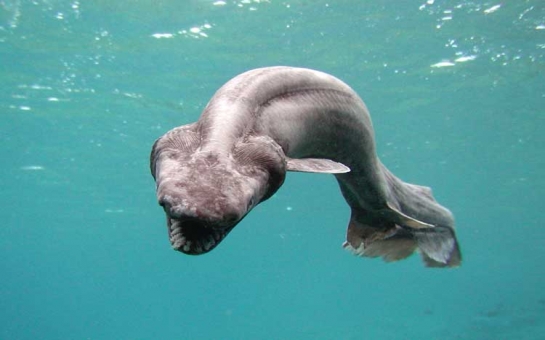Follow us !
New analysis of ocean currents may solve eel mystery
World
19:45 | 28.12.2013

New analysis of ocean currents may solve eel mystery
A new analysis of wind-driven Atlantic currents may help scientists solve a mysterious decline in eel numbers.These secretive creatures are born in the Sargasso sea but migrate to Europe where they spend most of their lives.But unexplained fluctuations in the numbers of those traversing the ocean have thwarted efforts to save the species.Now researchers believe they have built a computer model that will accurately predict the level of migration.The research is published in the journal, Current Biology.Smoke, fried or boiled, eels remain a popular dish in many parts of Europe, particularly at Christmas.Newspaper reports in the UK have indicated an upsurge in their consumption due to the recession as the fish are cheap and nutritious.But numbers of European eels have declined rapidly in recent decades and scientists have struggled to explain the reasons behind the drop.Transparent elversComplicating matters is the creature's complex life cycle. They are born in the Sargasso sea, in the middle of the Atlantic ocean.The young, called elvers, are sometimes known as glass eels, as you can literally see through them.Carried by the Gulf stream, they end up in European rivers where they can spend 20 years before embarking on the return voyage to spawn.A team of scientists has now managed to simulate these journeys on a mass scale, using a computer model that followed 8 million tiny drifting particles that represented the eel larvae. This model simulation covered the years between 1960 and 2005.The researchers found that small scale, wind-driven ocean currents strongly determined fluctuations in eel populations in Europe.The numbers were big when favourable currents made for a short trip. But when the currents changed and the journeys were much longer, fewer elvers survived."There is a clear link," Dr Christophe Eizaguirre from Queen Mary, University of London told BBC News."If the weather changes then there is a clear risk for the eel population."The destruction of river habitats and infections with a parasite have also impacted the eel numbers. But researchers believe that, if they can't figure out the scale of returning young, they won't be able to save this endangered species."Between the moment the eels are born and when they arrive on the European coast takes two years," said Dr Eizaguirre."So we can look at the currents and predict the number successfully arriving on the European coast so we have time to adjust management programmes."This would mean that, if numbers were low, eel fishing quotas could be lowered until stocks recovered.Homeward boundBy combining their modelling with genetic analysis, the researchers now believe that each eel returns to the spot where it was born - similar to turtles and salmon."This is a new finding," said Dr Miguel Baltazar-Soares, from the GEOMAR Helmholtz Centre for Ocean Research and the lead author of the study."So far it was assumed that the mating in the Atlantic takes place completely independently of the area of origin. Future scientific expeditions will have to verify this result in situ."The scientists say that the first draft of the eel's genome, which will be available in the coming months, might shed new light on just how these slippery creatures manage to navigate the ocean so accurately."Is it the Earth's geomagnetic field as some believe?" posed Dr Eizaguirre."Or do they have large numbers of olfactory genes like turtles, and somehow find the smell of home?""It is the one million dollar question," he said.(BBC)ANN.Az










